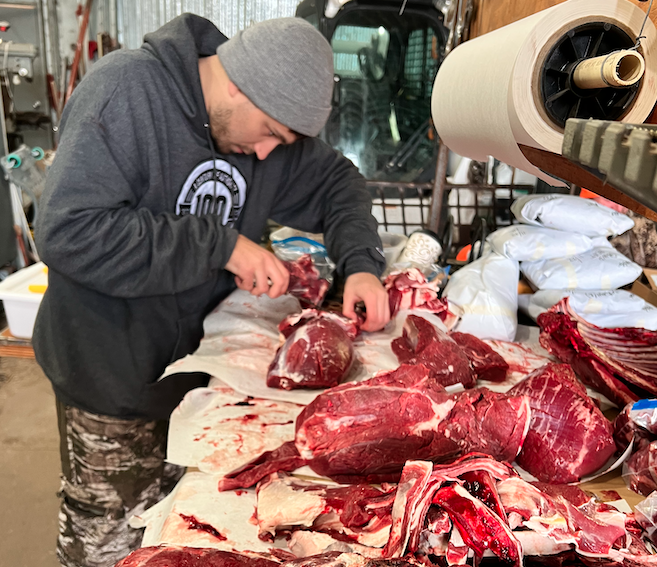We can thank YouTube for this week’s blog idea. We had just posted a “How Old Do You Think This Buck Is?” video short featuring an Illinois farmland 10-pointer. The prime specimen is 5-1/2 years old and sports an awesome 150-class set of antlers. It’s just one of those fun things we do from time to time – let people guess the age, score, etc. to drive engagement. Well, as it always happens these days, a lot of folks don’t read the caption. They just go rogue and, usually, throw in some wacky commentary.
Case in point on this video, one viewer wrote: “If you shoot that buck, a trophy is all that you would have, because he is so old, the meat would be as tough as shoe leather. You could possibly eat him if you had steel teeth.”
Shoe leather. Tough as nails. Like eating a catcher’s mitt. I can’t recall how many times I’ve heard such claims over the years. True?
False.
I could go equally rogue and spin my own one-man’s observations about how I’ve literally eaten hundreds of deer over the years and defy anyone to tell the difference. I’m not kidding. Prepared even halfway good, the venison from a fawn vs an 8-1/2-year-old buck have but one difference: The buck yields more meat.
But don’t take my word for it. Let’s do this justice and refer solely to a peer-reviewed scientific study that was published four years ago in publications like Applied Science, Animal Science, and The Encyclopedia of Food and Health.
In this study, researchers examined venison palatability and nutritional content from deer of both sexes and various ages. According to the researchers, “The aim of this study is to examine the effect of sex and age on proximate chemical, fatty acid, amino acid and mineral content of deer meat. The deer were hunt-harvested and assigned to groups according to sex and age (sub-adult and adult). All analyses were made on m. longissimus thoracis sampled between the 9th and 13th ribs. Minor differences in nutritional composition of axis deer meat were found between analyzed sex and age groups.”
Chemical analysis of fat, ash, protein and amino acids revealed very little difference between the meat from bucks vs does, and also the meat from young vs older animals. Only a minor difference in mineral content was found.
“Mineral content in the deer diet has a vital effect on their physiology and health,” they wrote. “As deer are intermediate feeders, they graze and browse on numerous varieties of plants, and the resulting mineral composition is reflected in the meat.”
The Department of University of Zagreb (School of Animal Science and Technology) researchers concluded by stating:
“Deer meat can be considered a good source of essential amino acids and micro-minerals like iron and zinc. As minor differences were found between sex and age groups, it can be concluded that axis deer meat is in the range of the general characteristics of other game species, offering beneficial nutritional and health-related characteristics.”

